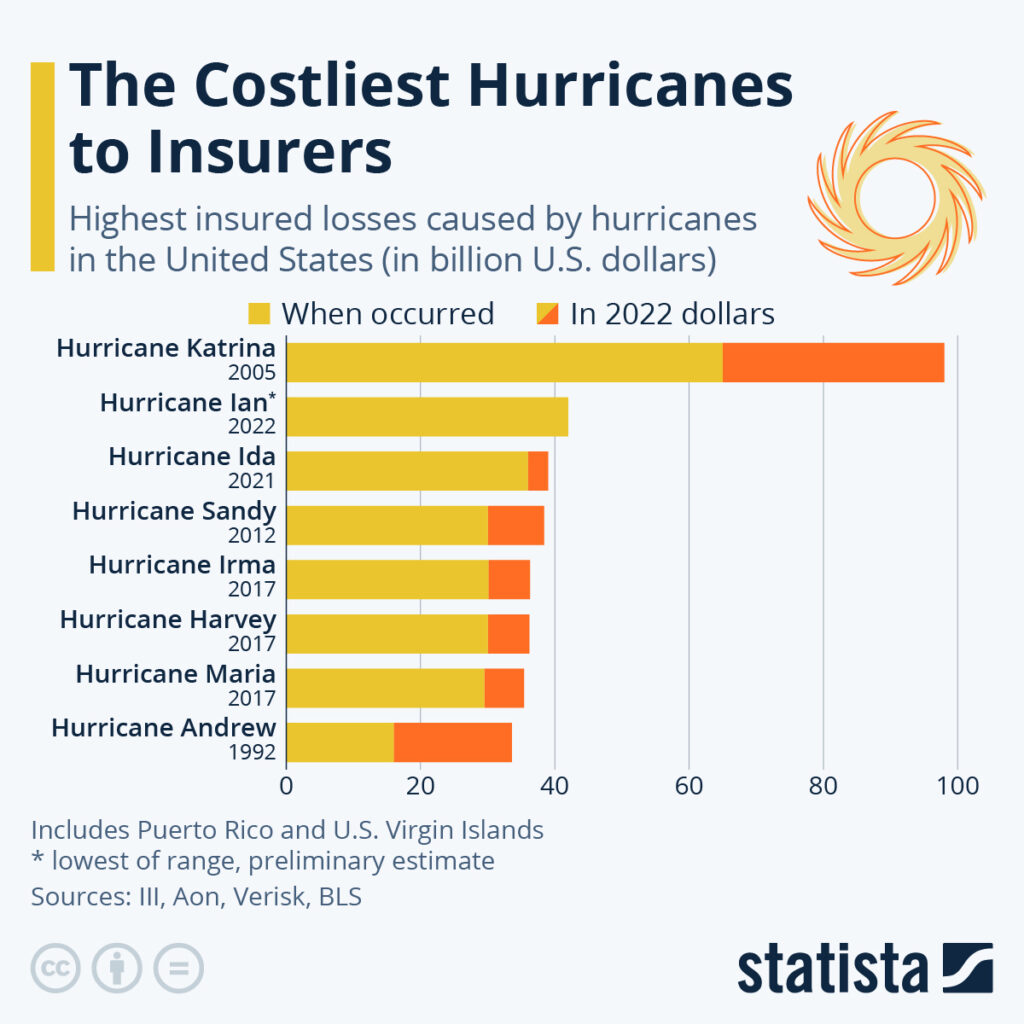President Biden visited Puerto Rico and announced that the federal government will provide $60 million for recovery and rebuilding in Puerto Rico. He also promised that the funds which have been allocated would actually reach Puerto Rico, which did not happen after Hurricane Maria.
We appreciate the support that the government is providing. Where else do funds for disaster recovery come from? One place is from insurance providers. The chart below shows the costs to insurance companies of recent hurricanes.
Hurricane Maria is low on the list, which seems surprising. Here are the total costs o these hurricanes, according to the National Oceanic and Atmospheric Administration:
- Hurricane Katrina:$186.3 billion
- Hurricane Harvey: $148.8 billion
- Hurricane Maria: $107.1 billion
- Hurricane Sandy: $81.9 billion
- Hurricane Ida: $78.7B billion.
How did Sandy and Ida end up higher on the list of “Costliest Hurricanes to Insurers” — along with Hurricane Irma, which wasn’t even on NOAA’s list — when Hurricane Maria’s total damage was much greater?
How bad was Hurricane Maria?
Hurricane Maria was a Category 5 storm, like Hurricane Maria. The death toll was in the thousands. The territorial government estimated that it would cost $139 billion to repair all the damage.
Energy, telecommunications, and water systems all were nearly destroyed. Some 80% of crops were lost.
Why weren’t insured costs that high?
RMS reports that insurance penetration in Puerto Rico — that is, the percentage of properties that are covered by insurance — is just about 60%. However, an academic study found that fewer than 4% of homeowners in Puerto Rico had flood insurance. Homeowner’s insurance without specific flood insurance typically does not cover the cost of water damage.
Compared with the states, fewer people in Puerto Rico have mortgages requiring flood insurance. More people rent their homes. And as many as half of residents have informal housing situations without building codes or in some cases legal titles to their homes. The poverty level in Puerto Rico is also higher than in any state, so there are many people who cannot afford flood insurance even if they see the need for it.
So one of the big reasons that the insured costs for Hurricane Maria were lower is simply that so many people didn’t have insurance. This doesn’t mean that there was less destruction, but rather that there was less recovery from the destruction.
Puerto Rico should be a state
Puerto Rico will continue to have hurricanes once we are admitted as a state of the Union. But the economy of the state of Puerto Rico will be very different from the economy of the territory. This has been true for every territory that has become a state, including Hawaii and Alaska. There is no reason to think it will not be true for Puerto Rico.
The condition of being a territory keeps Puerto Rico in poverty. It is time to admit Puerto Rico as a state and make it possible for the Island to fulfill her destiny. Tell your congressperson to get on the right side of history and resolve Puerto Rico’s status.









No responses yet